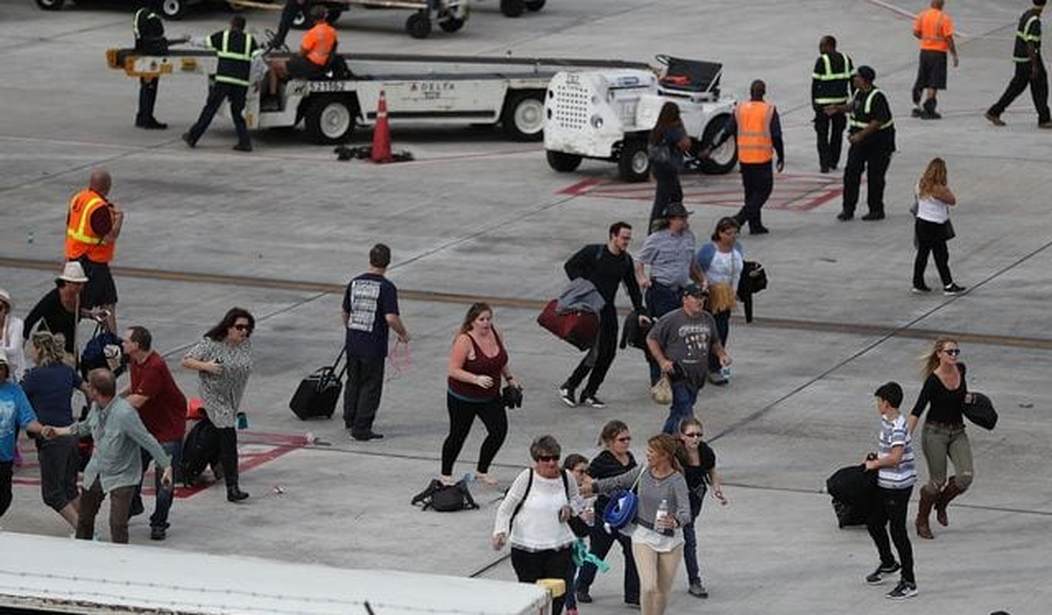What’s the price of a rumor? In the case of last week’s shooting at the Fort Lauderdale airport, it may have risen into the millions of dollars.
On Sunday, the New York Times reported on the panic and confusion that ensued after Friday’s shooting, when a man opened fire in the baggage claim area of Terminal 2. After killing five people and wounding eight others, the man dropped his weapon and surrendered to responding sheriff’s deputies.
As horrific as it was, the violence was brief and confined to a relatively small area in one of the airport’s four terminals. But that didn’t prevent the entire airport from being shut down, leaving both arriving and departing passengers unnecessarily stranded and inconvenienced for hours and causing disruptions to airline traffic that took days to sort out. All of that could have — and should have — been avoided.
It’s not as though there had never been a shooting at an American airport before. On Nov. 1, 2013, a man opened fire inside Terminal 3 at Los Angeles International Airport, killing a TSA agent and wounding others. The shooting began outside the security checkpoint but continued inside the terminal before the gunman was wounded by police gunfire. I was among the hundreds of police officers who responded to the incident, an experience I described at the time here on PJ Media.
As was the case in Fort Lauderdale last week, the scene at LAX was one of chaos and confusion, with the airport shut down for hours while hapless travelers sought safety from rumored but nonexistent threats, then were left to wonder about what was happening and wander about in search of a way out of the airport. And, like in Fort Lauderdale, airline traffic was disrupted, with the effects lasting for days.
In Los Angeles, I witnessed firsthand the paralysis in the LAX command post, where brass from the LAPD, FBI, LAX Police Department, FBI, ATF, U.S. Customs, and any number of other agencies seemed to conspire to add to the confusion. Police resources were dispatched to the airport without clear instructions on what to do when they arrived, and many of the officers spent the next several hours standing around with nothing to do, or else spent the time searching the airport for other gunmen when there was no reason to believe any such existed.
The lessons of that incident clearly were not learned by officials in Fort Lauderdale. As described in the New York Times story, after Friday’s shooting:
The airport had largely returned to its normal rhythm — passengers were noshing, charging their phones, watching television. Things were so sedate that [a traveler] did not even realize there had been a shooting.
The Times described what happened next:
A rumor about a possible second gunman had spread across the airport, via social media, news sites and word of mouth. People panicked and the airport was shut down, a turn of events that upended what had seemed like an orderly finale to a tragic afternoon. What followed that single rumor was a rush of terror for travelers and airport workers as they fled to the tarmac, were separated from loved ones, injured themselves in the tumult, hid in kitchens and storage rooms and hunkered down behind luggage trucks.
Based on what had happened at LAX in 2013, authorities in Fort Lauderdale should have anticipated such a scenario and taken steps to minimize its effects. But as I watched the events unfold on television, it appeared all the mistakes made in Los Angeles three years ago were being repeated.
There was no shortage of officers who responded, but it appeared that they did so without any direction on where to deploy and what actions to take. Passengers and airport employees who had fled to the tarmac, sometimes running one way and then another in response to perceived threats, were left out there without guidance as to where might be a safe place to wait out the trouble.
Just as troubling, aircraft taxiing toward the runways for takeoff were idled for far too long, as were flights that had arrived but not yet reached their gates. Some travelers sat on airplanes for seven hours before being allowed to disembark.
Sadly, we know it’s just a matter of time before a similar incident occurs at some American airport. Here are one police officer’s recommendations on what the authorities should do when it does.
Whether at an airport, a shopping mall, or a street corner, the police objectives in responding to a shooting are always the same — the only variations are of scale and scope.
First, officers should locate and neutralize the threat. Second, they should attend to the wounded. Third, they should preserve the scene for the purpose of investigating and prosecuting the crime. And lastly, they should make every effort to restore the crime scene to its normal state.
In Fort Lauderdale, the gunman was arrested within moments of the shooting, so the first objective was quickly met. The wounded received expeditious care, as evidenced by the fact that the eight victims who did not die at the scene survived the ordeal. The crime scene was confined to the baggage claim area of Terminal 2, so the third objective did not pose a significant challenge.
It was in the last objective that authorities in Fort Lauderdale, like their counterparts in Los Angeles in 2013, failed.
Panic, uncertainty, and rumors are certain to follow any shooting like that which occurred in Fort Lauderdale, as is a massive response by law enforcement. The challenge for the incident commander in these situations is putting those officers to effective use.
There isn’t a square inch of any major airport that isn’t monitored by security cameras, and immediately upon the report of a shooting, officers should be directed to examine the footage for any sign of trouble outside the crime scene. Obviously, any evidence of anomalous activity should be investigated, but in the absence of any, arriving officers should be deployed in public areas as a reassuring presence and to avoid the spreading of wild rumors.
Given the number of officers available at the Fort Lauderdale airport, there should have been some sent onto the tarmac to shepherd people to safety and to provide information. It is inexcusable that so many people were left on the tarmac for as long as they were.
In the immediate wake of an airport shooting, it is understandable that air traffic must be halted until the situation can be assessed. But once this is done, it is counterproductive to leave departing flights on the ground for interminable periods. It is to everyone’s benefit to have those flights get off the ground and not add to the confusion. Similarly, the arriving flights should be allowed to proceed to any unaffected terminal, and the passengers should be allowed to collect their luggage and leave the airport. Flights destined for the affected terminal can be directed to any free gates in other terminals, and if there are none, they can be sent to a remote part of the airport where methods of deplaning can be improvised.
None of the steps I’ve outlined here should be controversial, but they require some nimble thinking under stress. Sadly, such nimble thinking is not common among those who ascend to the higher levels of any police department, where management is more highly prized than leadership.
The next airport shooting may occur next week or next year, but it will occur. When it does, I hope the people in charge of the response don’t make a bad situation worse.









Join the conversation as a VIP Member